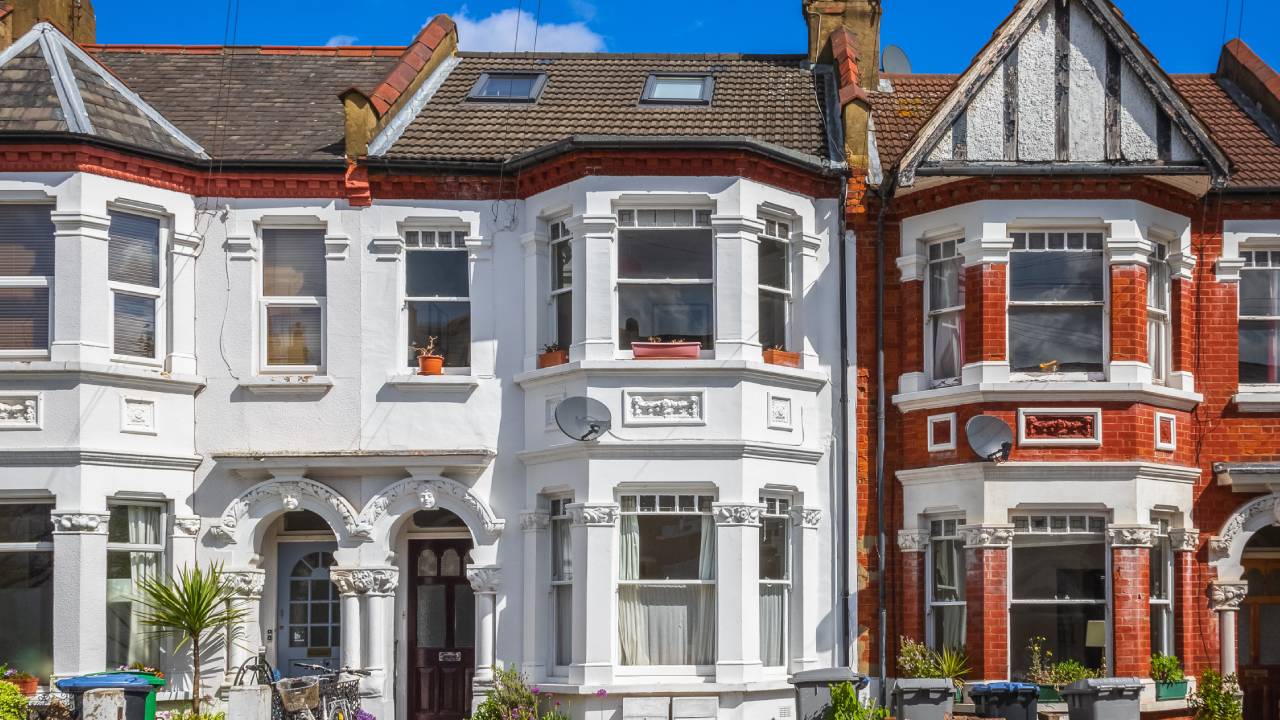Disclosure: FMB Home Picks is committed to delivering independent advice and reviews on home products and services. When you purchase through links on our site, we may earn an affiliate commission. Learn more Contact us.
Discover Georgian windows’ timeless elegance and charm in our comprehensive guide to double glazing. Explore their history, styles, and benefits
Georgian windows, characterised by their classic, symmetrical design, are a hallmark of architectural elegance. Popular with homeowners wanting to adopt period styling, they can be surprisingly affordable, depending on several factors, including frame material and glass type.
Owners of Georgian properties, however, are not limited to traditional window styles, with many contemporary designs complimenting period architecture.
In this article, we explore Georgian windows’ unique features, history, and enduring appeal.
The Georgian era spanned 1714 to c. 1830–1837 and takes its name from the reigns of the Hanoverian monarchs George I, George II, George III, and George IV in British history. Homes constructed during this period have symmetrical designs, proportionate layouts, and classical elements, such as columns and pediments.
Georgian windows are characterised by their sash design, consisting of two movable panels that slide vertically within the frame. Casement windows, while less common during this period, were also used. However, the Window Tax (1696 – 1851) influenced Georgian architecture and window style.
The Window Tax was levied on how many windows a property had, pushing homeowners to reduce their windows, thus lowering their tax liability. As a result, windows in upper stories and servants’ quarters were often smaller, irregularly spaced, or even entirely bricked up.
Additionally, manufacturing large, strong panes of glass during this period was technically challenging, so using smaller panes with support bars was a practical solution to create larger, well-lit spaces while using available glass technology.
Windows, therefore, became a sign of status, with affluent property owners displaying their wealth with multiple large-scale windows.
Bath is known for its well-preserved Georgian architecture – the Royal Crescent and The Circus being iconic examples. London’s Downing Street also features classic Georgian-style townhouses.

The ground floor of this Georgian house uses 6-over-6 style, but note how the first floor windows are reduced in size to a 3-over-6 design giving the illusion of larger windows using perspective. (Adobe)
During the 18th century, the technology to produce large glass panes of high quality was not available, leading to constructing windows from smaller panes out of necessity rather than for aesthetic or stylistic reasons.
Originally, making window glass involved glass blowers blowing a large cylinder, which was then heated, sliced open, and flattened. However, as the size of the glass increased, it became more prone to imperfections.
To maintain a desirable appearance and flatness, window manufacturers opted for smaller glass panes held together by wooden strips known as glazing bars.
The bars were typically configured in patterns of six or eight panes in each window sash. Often called 6-over-6 or 8-over-8, the window as a whole comprised 12 or 16 panes of glass, respectively.
Contemporary Georgian windows still feature glazing bars (known as astragel bars) to achieve period styling; however, the bars sandwich either side of larger glass panes to create the effect of traditional bars that separated the individual panes.. This means the windows appear authentic from a distance but lose this authenticity when observed close up.

Choosing new windows that respect the period’s architectural style ensures that renovations or updates enhance rather than detract from the home’s original character. For historic properties, this can be crucial in maintaining or improving value and adhering to local regulations or conservation guidelines where applicable. Matching the window style to the house’s period supports a cohesive aesthetic, ensuring that modern updates blend seamlessly with traditional designs.
Georgian architecture is characterised by symmetry and proportion, often inspired by classical Roman and Greek designs. Windows were typically sash with smaller panes held together by glazing bars, commonly seen in 6-over-6 or 8-over-8 configurations. Fau00e7ades are often plain with minimal decoration.

Victorian architecture is more ornate, combining styles including Gothic Revival, Italianate, and Queen Anne. Windows became larger with fewer glazing bars, often with a 2-over-2 or 1-over-1 pane configuration by the late Victorian era. Bay windows and stained glass were also common features.

Edwardian architecture marks a return to simpler designs influenced by the Arts and Crafts movement. Houses typically featured wider, airier frontages, with larger, simpler windows than Victorian properties, often using a 6-over-1 or single-pane sash design. Stained glass remained popular, particularly in the door and surrounding panels.
The decision to repair or replace damaged window frames should be made after considering the windows’ historical value, the damage’s extent, the potential for energy efficiency improvements, and cost implications. Repairing and restoring original windows is often favoured for historical conservation while replacing them might be more practical for improving insulation and long-term savings.
Here’s a concise overview of when to repair versus replace:
If you own a listed property, the preferred approach is that the original windows are regularly maintained and repaired when necessary. They should only be replaced if they are totally beyond repair but you will need to apply for listed building consent through your Local Planning Authority.
However, most minor repairs can be completed without consent, including painting, draught-proofing, and sympathetic wood restoration. You may also be able to replace your Georgian windows if installing ‘like for like’, but it’s essential to check before undertaking any work.
For Georgian window frames, if replacement is necessary due to removal or inappropriate replacements by previous owners, the preferred material option is timber with glazing bars. This choice aligns with the period’s authenticity and architectural integrity, reflecting the original construction methods and aesthetics.
uPVC double glazing units with internal bars are generally considered less suitable for Georgian-style windows, as they lack authenticity. Furthermore, uPVC windows might not be permitted under planning regulations, especially in listed buildings or conservation areas, where maintaining historical accuracy is crucial.
Finding quotes for replica Georgian windows involves a few steps to ensure you get the best quality at a fair price. Here’s the best way to approach the process:
Ensure the companies have good reputations, check reviews, and view examples of their previous work on similar properties.
Contact several providers to get a range of quotes. Be specific about your materials and design requirements, such as energy efficient glass, to ensure the quotes are comparable.
Georgian windows tend to be more expensive than standard ones due to their unique characteristics and the craftsmanship required to replicate the period’s style accurately.
The intricate designs, including small panelled glazing bars and the use of high-quality timber, necessitate skilled labour and custom manufacturing, driving up the windows’ costs. Additionally, specialised glazing may be needed to conform to modern energy efficiency standards without compromising historical appearance.
Compliance with strict guidelines adds another layer of complexity and expense for properties in conservation areas or listed buildings. Despite the higher initial investment, the value they add in terms of aesthetics and authenticity often makes them a worthwhile choice for preserving historic properties.
Sash windows are a hallmark of both Georgian and Victorian architectural styles, reflecting the evolving tastes and technological advancements across these periods.
Initially popularised during the Georgian era, sash windows epitomise the period’s emphasis on symmetry, proportion, and classical elegance, often featuring multiple small panes divided by glazing bars. As the Victorian era unfolded, sash window designs evolved to include larger panes of glass, reflecting improvements in glass manufacturing techniques.
Despite these changes, the fundamental mechanism and aesthetic appeal of sash windows remained a constant, making them a defining feature throughout both the Georgian and Victorian periods in architectural history.
Traditionally, Georgian window frames were painted white. This choice was both stylistic and practical, as white paint contained lead, which offered durability and protection against wood rot.
The preference for white also reflected the Georgian era’s emphasis on light and elegance, complementing the architectural designs of the period. This colour scheme became a defining characteristic of Georgian architecture, contributing to the classic and refined appearance of buildings from this era.
Contemporary Georgian colour schemes feature rich burgundy, sage green, and lighter shades, such as soft blues and greys. Many paint manufacturers offer special ranges of colours from historical periods, allowing you to recreate the Georgian look accurately.